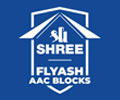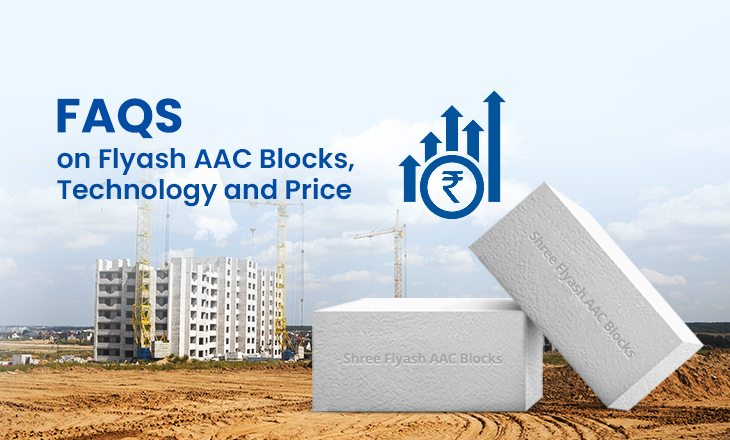Flyash AAC blocks are eco-friendly and certified green building materials that are gaining popularity in the construction industry and fast replacing traditional red clay bricks. If you are planning to use AAC blocks in your next project, here are some FAQs and their answers on AAC blocks, technology and Flyash AAC blocks price that you will find useful:
Question 1: What are Flyash AAC blocks? What are they made of?
AAC stands for Autoclaved Aerated Concrete. They are lighter and more durable than regular red clay bricks. Our Shree Flyash AAC Blocks are made using fly ash, clay and other eco-friendly materials.
Question 2: Is Flyash AAC block environmentally friendly?
Yes, Flyash AAC blocks offer many environmental benefits.
First, it is estimated that 70% less water is required during construction as these ACC concrete blocks need no curing like traditional red bricks.
Second, our Flyash AAC blocks have excellent thermal insulation-properties. This means the structure doesn’t absorb the heat from the extreme sunlight that is prevalent through the major part of the year. Thus reducing the need for air conditioning which helps reduce electricity bills by close to 30%
Third, as ACC blocks are lightweight, thus reducing the requirement of steel and cement for the structure. All in all, Flyash AAC blocks are an eco-friendly choice.
Note: AAC Blocks are certified under the green rating system. This means, builders will gain credit points for using them.
Question 3: How do you make an Flyash AAC block of concrete?
Shree Flyash AAC Blocks are made in India in the most advanced manufacturing unit, using the most advanced German Technology, our Flyash AAC blocks have an unmatched quality.
The steps in manufacturing are
- Raw Material Preparation
- Dosing and Mixing
- Cutting
- Autoclaving or Curing
- Packing and dispatch
Question 4: What are Flyash AAC blocks advantages?
There are many advantages of using Flyash AAC blocks and some of them include:
- Help in reducing operating costs: Flyash AAC Block has high thermal insulation. It can reduce power consumption costs by 30% due to the lesser need for air conditioning.
- Offers acoustic insulation: Flyash AAC blocks have good sound insulation that helps in reducing outside noise levels.
- Speeds up construction work: Unlike traditional red bricks, Flyash AAC blocks do not require curing, this not just saves water but also speeds up the construction work.
- Reduce construction costs: Flyash AAC blocks cost less than conventional red bricks. Flyash AAC lightweight blocks are easy to transport and work with, thus, the labour costs get reduced.
- Credit points: Flyash AAC Block is certified under the green rating system. The builder will gain credit points for using the eco-friendly material.
Question 5: Which is better: Flyash AAC blocks or Red bricks?
Flyash AAC block is way superior to traditional red clay bricks. Shree Flyash AAC Blocks weigh 8 times less than traditional red clay bricks, they need less mortar, steel and labor, resulting in huge saving in construction costs. Moreover, our Flyash AAC blocks are made of eco-friendly materials whereas traditional red clay bricks are made of agricultural soil and are responsible for degradation of the top soil.
Question 6: How is Flyash AAC Block cost effective in comparison to brick masonry?
The weight of our Flyash AAC blocks is 8 times less than traditional red bricks. This means less cement and steel are required for similar wall masonry work, saving costs. Moreover, when you use transitional bricks, there are no additional savings in terms of operating costs. Flyash AAC blocks offer improved sound and heat insulation compared to bricks. This means energy-saving in terms of use of air conditioning. Superior sound insulation will ensure that there’s no need to invest in acoustic flooring and panels later on.

